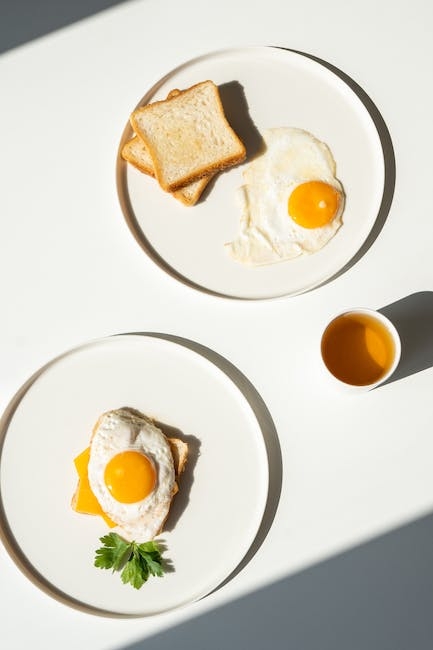Unlocking the Secrets of Oolong Tea: A Guide to Its Flavor Profile and Brewing Techniques
Have you ever tried oolong tea? If not, you’re in for a treat. Oolong tea is a unique and complex beverage that offers a wide range of flavor profiles, depending on various factors such as the tea plant variety, growing region, altitude, soil, climate, processing method, and brewing technique.
What is Oolong Tea?
Oolong tea is a partially fermented tea that falls somewhere between green tea and black tea in terms of oxidation level, which can range from 10% to 80%. This partial fermentation process gives oolong tea its distinctive taste, which can be described as floral, fruity, nutty, earthy, woody, or creamy, depending on the specific type of oolong and the individual palate.
Popular Oolong Flavor Profiles
Here are some of the most popular oolong flavor profiles:
- Tie Guan Yin (Iron Goddess) oolong: known for its sweet and floral aroma, with notes of orchid, honey, and roasted nuts.
- Da Hong Pao (Big Red Robe) oolong: characterized by a rich and smoky flavor, with hints of caramel, cocoa, and dried fruit.
- Wuyi Rock oolong: famous for its mineral and rocky taste, with undertones of pine, cinnamon, and ginger.
- Oriental Beauty oolong: prized for its complex and sweet flavor, with a honey-like aroma and notes of peach, apricot, and muscat grape.
Brewing Oolong Tea
To fully appreciate the flavor profile of oolong tea, it is important to pay attention to the brewing parameters, such as the water temperature, the steeping time, and the amount of tea leaves used.
Generally, oolong tea is best brewed with water that is around 190F to 200F, for 2 to 3 minutes, using approximately 2 to 3 grams of tea leaves per 8-ounce cup. However, the brewing parameters can vary depending on the specific type of oolong tea, so it’s always a good idea to follow the brewing instructions provided by the tea vendor.
Experimenting with different brewing techniques and vessels, such as gaiwan, teapot, or gongfu style, can also enhance the taste and aroma of oolong tea. Gongfu style, for example, involves using a higher ratio of tea leaves to water, and multiple short steepings, which can bring out the complexity of oolong tea.
Conclusion
Oolong tea is a fascinating beverage that offers a diverse range of flavor profiles and brewing techniques. Whether you prefer a sweet and floral Tie Guan Yin, a rich and smoky Da Hong Pao, a mineral and rocky Wuyi Rock, or a complex and sweet Oriental Beauty, there’s an oolong tea for everyone to enjoy.

So why not give oolong tea a try and discover its unique flavor profile for yourself? Who knows, you may just find your new favorite tea.
Discovering the Unique Flavors of Oolong Tea: A Guide to Varieties and Brewing Methods
Oolong tea is a partially oxidized tea that lies between a green tea and a black tea in terms of oxidation level. Originating from China, this tea has gained popularity worldwide due to its unique and complex flavor profile. In this blog post, we will discover the different varieties of oolong tea, the factors that influence their flavor, and the best brewing methods to bring out their distinct taste.
Categories of Oolong Tea
The degree of oxidation determines the category of oolong tea. The oxidation level can range from 10% to 90%, depending on the processing method. The following are the categories of oolong tea:
| Category | Oxidation Level | Processing Method | Examples |
|---|---|---|---|
| Lightly oxidized | 10-20% | Sun-drying, withering, and baking | Tie Guan Yin (Iron Goddess), Bao Zhong (Pouchong), and Dong Ding |
| Moderately oxidized | 20-60% | Sun-drying, withering, bruising, and baking | Da Hong Pao (Big Red Robe), and Tung Ting |
| Heavily oxidized | 60-90% | Withering, rolling, and fermenting | Wuyi Rock tea and Phoenix Dan Cong tea |
Flavor Profiles of Oolong Tea
The flavor profile of oolong tea is influenced by various factors, including the degree of oxidation, the processing method, and the growing region. Here are some of the popular varieties and their unique taste:
- Tie Guan Yin (Iron Goddess): This variety has a floral and fruity aroma with a sweet aftertaste.
- Da Hong Pao (Big Red Robe): Known for its roasted and nutty flavor, this tea has a smoky aftertaste.
- Wuyi Rock tea: The mineral and earthy taste of this tea is due to its rocky growing region.
Other factors that can influence the flavor of oolong tea include the age of the leaves, the season in which they were picked, and the altitude at which they were grown.
Brewing Oolong Tea
The brewing method can also affect the flavor of oolong tea. Here are some tips for brewing oolong tea:
- Use fresh, filtered water that is heated to the appropriate temperature. For lightly oxidized oolong tea, the water should be between 170-180°F, while for heavily oxidized tea, the water should be between 190-200°F.
- Steep the tea for the appropriate time. Lightly oxidized tea should be steeped for 1-2 minutes, while heavily oxidized tea should be steeped for 3-5 minutes.
- Use a teapot or gaiwan to brew the tea. This allows the tea to infuse evenly and brings out its full flavor.
- Re-steep the tea leaves several times to get the most out of their flavor. Oolong tea is known for its ability to provide multiple infusions, each with a slightly different taste.
Conclusion
Oolong tea is a complex and nuanced tea that offers a wide range of flavor profiles. The degree of oxidation, processing method, and growing region all contribute to the unique taste of each variety of oolong tea. By understanding the different categories of oolong tea and the best brewing methods, you can fully appreciate the rich and flavorful experience that oolong tea has to offer.
Discovering the Flavor Profile of Oolong Tea
Oolong tea is a unique and complex beverage that offers a wide range of flavor notes and textures. From floral and fruity to nutty and earthy, oolong can be an exciting and intriguing experience for anyone who appreciates the art of tea. But how can you fully appreciate the flavor of oolong? Let’s explore some tips and tricks to help you discover the flavor profile of oolong tea.
1. Use Freshly Boiled Water
One of the most important factors in preparing oolong tea is to use freshly boiled water. The temperature of the water can affect the flavor and aroma of the tea, so it’s best to use water that is just below boiling (around 190-200°F). This will help to extract the full range of flavors from the tea leaves.
2. Steep for the Recommended Time
Each variety of oolong tea may have different steeping times, usually ranging from 3-5 minutes. Be sure to check the recommended steeping time for the specific type of oolong you are brewing. Steeping for too long or too short a time can affect the flavor of the tea.
3. Smell the Aroma
Before taking a sip, smell the aroma of the brewed tea. This can give you a clue about the flavor notes you might detect. Some oolongs have a floral or fruity aroma, while others may have a nutty or earthy aroma. Take note of what you smell and see if you can detect those same notes in the flavor of the tea.
4. Pay Attention to Taste Sensations
Take a small sip and let it roll around your mouth, paying attention to the different taste sensations you experience. Oolong can be sweet, sour, bitter, or a combination of these. Some oolongs may have a distinct flavor profile, while others may offer a more subtle taste. Notice the texture of the tea as well. Oolong can be smooth, creamy, or even a bit astringent.
5. Notice the Aftertaste
Swallow the tea and pay attention to the aftertaste. Some oolongs have a lingering finish that can be pleasant or unpleasant, depending on your personal taste. Take note of how the flavor lingers in your mouth and whether it is enjoyable or not.
6. Taste Side by Side
If you’re comparing different oolongs, try to taste them side by side to better appreciate the differences in flavor and texture. This can be a fun and educational experience, allowing you to discover new flavors and sensations.
Overall, oolong tea is a unique and complex beverage that offers a wide range of flavor notes and textures. By following these tips, you can fully appreciate the flavor profile of oolong and enjoy the art of tea.
How to Pair Oolong Tea with Food: A Guide to Flavor Pairings
If you’re a tea lover, you know that different teas have different flavor profiles that can be enhanced by pairing them with the right foods. Oolong tea, in particular, is known for its complex and nuanced flavor profile, which can range from floral and fruity to earthy and nutty. In this blog post, we’ll explore the art of pairing oolong tea with food and provide some tips on how to get the most out of your tea and culinary experiences.
Consider the Flavor Notes of Oolong Tea
When pairing oolong tea with food, it’s important to consider the specific flavor notes of the tea and how they complement or contrast with the flavors of the dish. In general, oolong tea pairs well with light and delicate foods, such as seafood, white meat, salads, and light desserts. The floral and fruity notes of oolong tea can also complement spicy and savory dishes, such as Indian and Thai cuisine. For richer and more robust dishes, such as red meat and creamy sauces, it’s best to choose a darker and more full-bodied oolong tea that can stand up to the strong flavors.
Specific Oolong Tea Varieties and Pairings
When it comes to specific oolong tea varieties, some popular pairings include:
Lightly Oxidized Oolongs
Lightly oxidized oolongs, such as Tie Guan Yin or Bao Zhong, pair well with seafood, salads, and light desserts. These teas have delicate flavors that are best brought out with lower brewing temperatures (around 175-185F).
Moderately Oxidized Oolongs
Moderately oxidized oolongs, such as Da Hong Pao or Wuyi Rock tea, pair well with roasted or grilled meats, spicy foods, and rich desserts. These teas have a more robust flavor profile that can stand up to stronger flavors and can be brewed at slightly higher temperatures (around 195-205F).
Darker and Heavily Oxidized Oolongs
Darker and heavily oxidized oolongs, such as Shui Xian or Rou Gui, pair well with strong and savory dishes, such as stews, curries, and cheese. These teas have a full-bodied richness that can hold up to the bold flavors of these dishes and can be brewed at higher temperatures (around 195-205F).
Brewing Method and Temperature
It’s also important to consider the brewing method and temperature of oolong tea when pairing it with food. As mentioned above, lighter oolongs are best brewed at lower temperatures to bring out their delicate flavors, while darker oolongs can be brewed at higher temperatures to extract their full-bodied richness. Additionally, steeping times can also affect the flavor of the tea, so be sure to follow the recommended brewing instructions for the specific oolong tea you’re using.
Final Thoughts
Pairing oolong tea with food can be a fun and satisfying experience that enhances both the flavor of the tea and the dish. By considering the flavor notes of the tea, specific oolong tea varieties, and brewing method and temperature, you can create a harmonious and delicious pairing. So, next time you’re enjoying a cup of oolong tea, try pairing it with a complementary dish and see how the flavors come together in a delightful way.


Leave a Reply